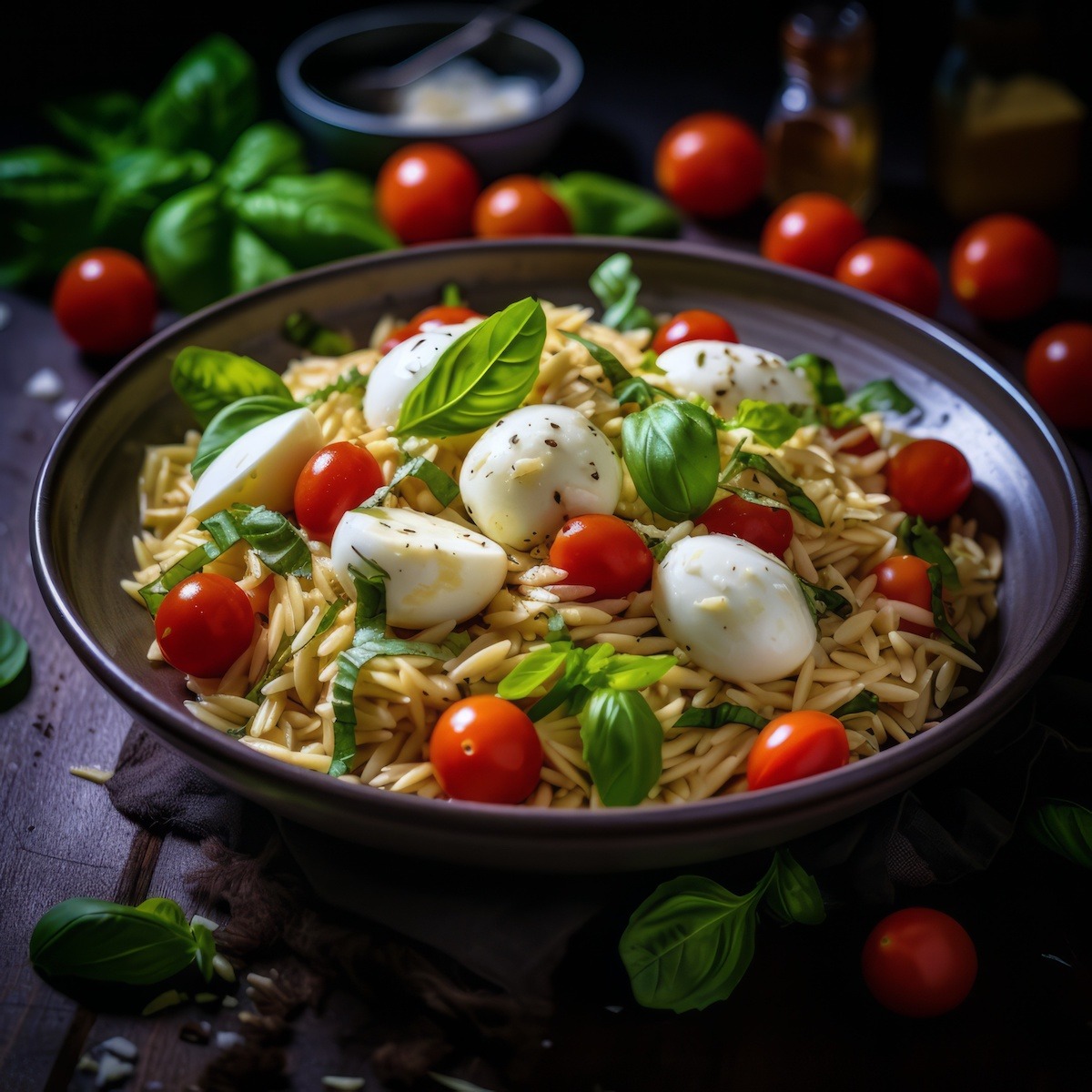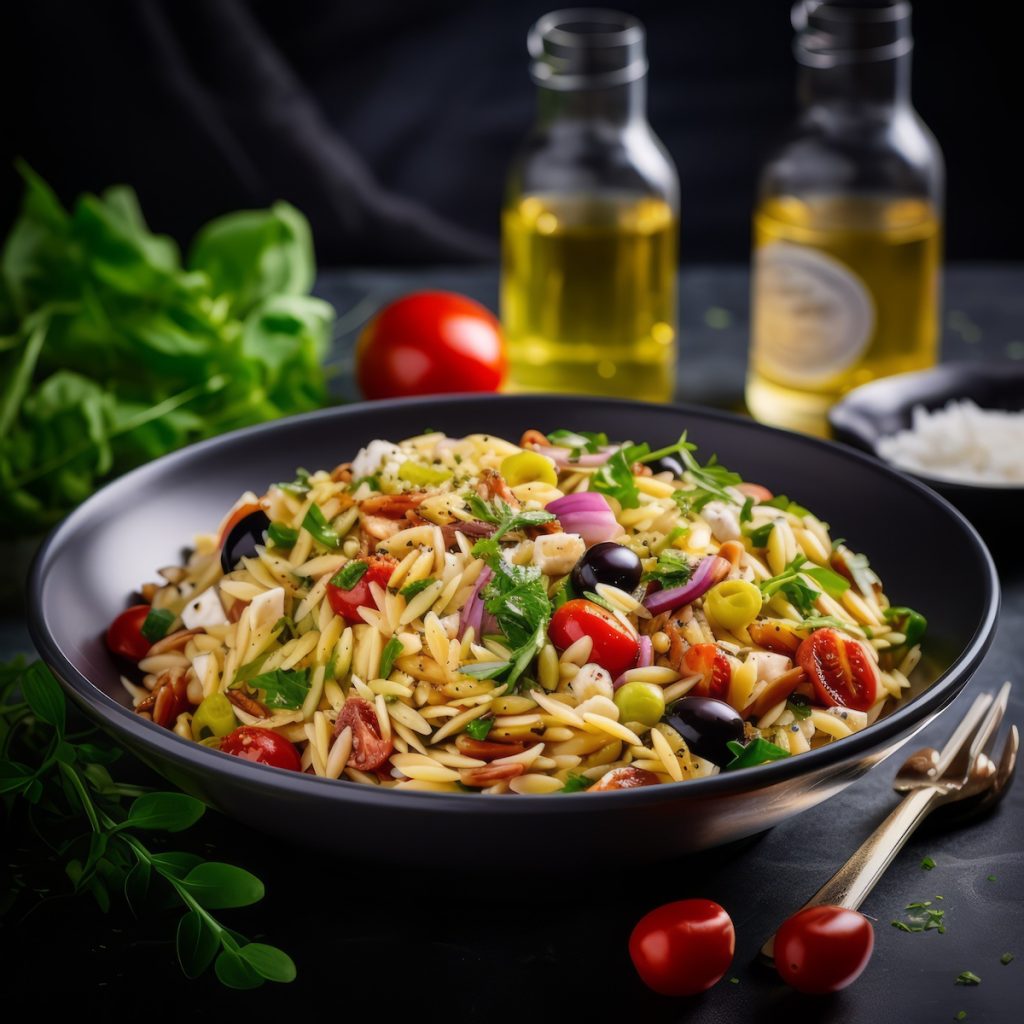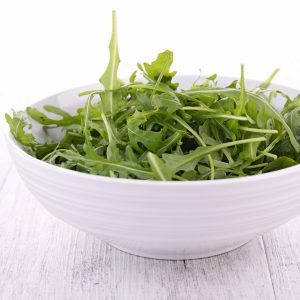What Is Orzo
Orzo is a type of pasta that is shaped like grains of rice. It is made from durum wheat flour and water and is usually cooked by boiling in water until it is tender. It is often used in soups, salads, and other dishes to substitute rice or other grains.
Orzo is a versatile ingredient that can be flavored in various ways and pairs well with various other ingredients. Some common dishes that include orzo include pasta salads, minestrone soup, and pilaf.
It is a versatile pasta that is used in various dishes, and it may not have a single “most famous” dish. However, one well-known and widely enjoyed dish is “Orzo Salad.” It is a popular and versatile dish that can be customized with various ingredients based on personal preferences and regional variations.
It often includes cooked orzo tossed with fresh vegetables, herbs, feta cheese, olives, and a flavorful vinaigrette dressing. It’s a refreshing and satisfying dish, particularly in the warmer months, and it’s commonly served as a side dish or a light meal. The versatility of orzo salad allows for endless variations, making it adaptable to different cuisines and individual tastes.
While orzo salad is one of the more well-known orzo dishes, it’s worth noting that orzo is also used in various other recipes, including soups, casseroles, pilafs, and more. The “most famous” orzo dish may vary depending on cultural and regional preferences.
What is the history of orzo?
Like many pasta varieties, its history is rooted in the long tradition of pasta making in the Mediterranean and Middle Eastern regions. Orzo itself is believed to have originated in Italy, where pasta-making has a rich history dating back centuries.
Here are some key points in the history of orzo:
- Ancient Origins of Pasta: The origins of pasta, including orzo, can be traced back to ancient civilizations in the Middle East and Asia—the concept of making pasta from wheat flour and water spread throughout the Mediterranean region.
- Italian Influence: Italy is often credited with the popularization and refinement of pasta. Pasta had become a staple in Italian cuisine by the Middle Ages, and various shapes and forms were developed.
- Orzo in Italy: The name “orzo” is Italian for barley, and the pasta is named for its resemblance to barley grains. While it is not made from barley, its shape is reminiscent of the grain, and the name reflects that similarity.
- Versatility in Cooking: Orzo’s small, rice-shaped form and quick cooking time make it a versatile ingredient. It can be used in various dishes, ranging from soups and salads to side dishes and main courses.
- International Adoption: Over time, orzo has been adopted into various cuisines worldwide. Its adaptability and neutral flavor have contributed to its popularity in different culinary traditions.
While the precise historical details of orzo’s development are not well-documented, its place in Mediterranean and Italian cuisine has made it a beloved and widely used pasta shape. Today, orzo continues to be a versatile and popular ingredient in various dishes worldwide.
Why is orzo confused with rice?
Orzo is sometimes confused with rice because of its similar appearance. It is a type of pasta shaped like rice grains, and when cooked, it has a texture reminiscent of rice. The small, rice-sized shape of it can lead people to mistake it for a type of rice, especially if they are unfamiliar with different pasta varieties.
In recipes, orzo is often used as a rice substitute, particularly in salads, pilafs, and side dishes. Its versatility and ability to take on the flavors of the ingredients it’s paired with make it a popular choice in various dishes. However, it’s important to note that it is made from wheat flour, while rice is a grain, so they differ in terms of composition and taste.
Is orzo readily available?
The availability of orzo can vary depending on your location and the grocery stores in your area. In many places, orzo is a common pasta variety and can be found in well-stocked supermarkets, specialty food stores, or grocery stores with a diverse pasta selection.
Orzo is often located in the pasta aisle alongside other pasta shapes, but it might also be found in the international foods section. If you’re having difficulty finding orzo, check with store staff or ask if they can order it for you. Additionally, you may find orzo at online retailers that offer a wide range of pantry items.
In regions where pasta is a staple, orzo is generally easy to find. However, if you’re in an area where pasta varieties are not as diverse, you should explore different stores or consider online options to locate orzo.
Substitutions
If you need to substitute orzo in a recipe, you can choose another small pasta shape or grain that is similar in size and texture. Here are some alternatives:
- Rice: You can often substitute rice in a pilaf or salad if the recipe calls for orzo. However, keep in mind that rice has a different texture when cooked.
- Pearl Couscous: Also known as Israeli couscous, it is larger than orzo but has a similar shape. It works well in salads and side dishes.
- Small Pasta Shapes: You can use small pasta shapes such as ditalini, small shells, or small penne as alternatives to orzo in soups or salads.
- Quinoa: While quinoa is smaller than orzo, it can be used in salads or pilafs to add a different texture and nutritional profile.
- Barley: For certain recipes, especially those with a longer cooking time, barley can be a suitable substitute. It has a chewy texture and a nutty flavor.
- Couscous: While finer in texture than orzo, couscous can be a substitute, especially in salads or dishes where the texture difference is acceptable.
Remember that the cooking times and methods may vary when substituting, so adjust accordingly. The goal is to find a replacement that complements the other ingredients in your recipe.
Do you eat orzo cold or warm?
Orzo can be eaten both cold and warm, depending on the recipe and personal preference.
- Cold Orzo: Cold orzo is often used in salads. After cooking the orzo, you can rinse it under cold water to stop the cooking process and cool it down quickly. Once cooled, you can toss it with various ingredients such as vegetables, herbs, and a vinaigrette dressing to create a refreshing cold orzo salad.
- Warm Orzo: Orzo is also commonly served warm, similar to other pasta dishes. You can cook it and use it as a base for various warm dishes such as pilafs, casseroles, or side dishes. In these cases, the orzo is typically cooked to a tender consistency and served immediately.
Ultimately, whether you eat orzo cold or warm depends on the specific recipe you’re following and your personal taste preferences. Cold orzo salads are popular in the summer months or as a refreshing side dish, while warm orzo dishes can be comforting and suitable for colder weather.
Salad Variations

Orzo salads are versatile, and you can create a variety of delicious variations by incorporating different ingredients and dressings. Here are some orzo salad variations to consider:
- Mediterranean Orzo Salad:
- Ingredients: Orzo, cherry tomatoes, cucumber, Kalamata olives, red onion, feta cheese, fresh parsley, olive oil, lemon juice, oregano.
- Toss with a lemony vinaigrette and top with crumbled feta for a refreshing Mediterranean twist.
- Caprese Orzo Salad:
- Ingredients: Orzo, cherry tomatoes, fresh mozzarella balls, fresh basil, balsamic glaze, olive oil, salt, and pepper.
- Combine the classic Caprese flavors with cooked orzo for a delightful summer salad.
- Roasted Vegetable Orzo Salad:
- Ingredients: Orzo, roasted bell peppers, zucchini, cherry tomatoes, red onion, feta cheese, balsamic vinaigrette.
- Roast the vegetables for added depth of flavor, and toss with orzo and a tangy dressing.
- Greek Orzo Salad:
- Ingredients: Orzo, cucumber, cherry tomatoes, red onion, Kalamata olives, feta cheese, red wine vinegar, olive oil, oregano.
- Capture the flavors of Greek cuisine with this combination of fresh vegetables and Mediterranean ingredients.
- Pesto Orzo Salad:
- Ingredients: Orzo, cherry tomatoes, fresh mozzarella, pesto sauce.
- Toss orzo with pesto for a vibrant and flavorful pasta salad.
- Spinach and Sun-Dried Tomato Orzo Salad:
- Ingredients: Orzo, fresh spinach, sun-dried tomatoes, pine nuts, feta cheese, balsamic vinaigrette.
- Combine the sweetness of sun-dried tomatoes with the nutty crunch of pine nuts for a delightful salad.
- Southwest Orzo Salad:
- Ingredients: Orzo, black beans, corn, cherry tomatoes, avocado, cilantro, lime vinaigrette.
- Infuse southwestern flavors into your orzo salad with ingredients like black beans and a zesty lime dressing.
Feel free to get creative and customize these recipes to suit your taste preferences. You can add proteins like grilled chicken or shrimp to make the salad a complete meal.
What is the ratio of water to orzo?

The ratio of water to orzo can vary slightly depending on personal preference and the specific cooking instructions on the package. However, a common ratio is generally about 2 to 3 parts water to 1 part orzo. Here’s a basic guideline for cooking orzo:
- Boiling Method: Bring 2 to 3 cups of water to a boil for every 1 cup of dry orzo.
- Cooking Instructions: Once the water is boiling, add the orzo and a pinch of salt (if desired).
- Cooking Time: Cook the orzo according to the package instructions, usually for about 8 to 10 minutes or until it is tender but still has a slight bite to it.
- Draining: Drain the cooked orzo in a colander and rinse it under cold water if you plan to use it in a cold dish like a salad.
Always check the specific cooking instructions on your orzo package, as cooking times and water ratios can vary between brands. Adjustments may be necessary based on your preferences and the desired texture of the orzo for your recipe.
What are some tips for making a spectacular orzo salad?
Creating a spectacular orzo salad involves a combination of flavorful ingredients, thoughtful preparation, and attention to detail. Here are some tips to make your orzo salad stand out:
- Cook Orzo Al Dente: Cook until it is al dente (firm to the bite) to ensure it maintains a pleasing texture in the salad. Overcooked orzo can become mushy.
- Rinse and Cool: Rinse under cold water to stop the cooking process and cool it down quickly. This is crucial for salads, as it helps prevent the orzo from sticking together.
- Choose Fresh Ingredients: Use fresh, high-quality vegetables, herbs, and other ingredients. The freshness of the components enhances the salad’s overall taste and appearance.
- Balance Flavors: Aim for a balance of flavors. Consider the interplay of sweet, salty, tangy, and savory elements. Ingredients like tomatoes, olives, feta, and fresh herbs contribute to a well-balanced flavor profile.
- Add Color and Texture: Incorporate a variety of colorful vegetables to make the salad visually appealing. Consider adding ingredients with different textures, such as crunchy cucumbers, crisp bell peppers, and creamy feta.
- Experiment with Herbs: Fresh herbs like basil, parsley, mint, or dill can elevate the flavors of your orzo salad. Experiment with different herbs based on your preferences.
- Dress with Care: Tune the ingredients together with a flavorful or vinaigrette. A homemade dressing with olive oil, vinegar or citrus juice, and herbs can add a personal touch.
- Consider Proteins: Add proteins like grilled chicken, shrimp, or chickpeas to make the orzo salad a complete and satisfying meal.
- Let It Marinate: If time allows, marinate the orzo salad in the refrigerator for a while before serving. This allows the flavors to meld and intensify.
- Garnish Creatively: Garnish the orzo salad with additional fresh herbs, crumbled cheese, or nuts to enhance its appearance and add extra layers of flavor.
Remember that orzo salads are versatile and can be customized to suit your taste preferences. Feel free to get creative and adapt the recipe based on your favorite ingredients.
More dishes that use orzo in them:
Orzo is a versatile pasta that can be used in various dishes beyond salads. Here are some other dishes that feature orzo:
- Soups: It is commonly used in soups, adding a hearty and satisfying element. It cooks quickly and absorbs the flavors of the broth. It’s often featured in chicken or vegetable soups.
- Pilafs and Risottos: Orzo can be used in pilaf or risotto-style dishes. Cooked with broth, aromatics, and other ingredients creates a creamy and flavorful side dish.
- Casseroles: It works well in casseroles combined with vegetables, meats, and sauces. It can be baked to a delicious, comforting texture.
- Stuffed Peppers or Tomatoes: Orzo is a great addition to stuffed peppers or tomatoes. Mix it with ingredients like ground meat, vegetables, and herbs for a tasty filling.
- Skillet or Stir-Fry Dishes: Can be used in skillet or stir-fry dishes, similar to how rice or other grains might be used. It pairs well with a variety of proteins and vegetables.
- Orzo Primavera: Create a vibrant pasta primavera by combining orzo with a medley of sautéed seasonal vegetables. Add a light olive oil or tomato-based sauce for extra flavor.
- Orzo with Pesto: Toss it with homemade or store-bought pesto for a quick and flavorful side dish. You can also add roasted vegetables or grilled chicken for a complete meal.
- Orzo and Seafood: It pairs well with seafood. Create a dish with orzo, shrimp, scallops, or other seafood complemented by a lemony or garlic-based sauce.
- Orzo with Tomato Sauce: Serve it with a rich tomato sauce, similar to how you might serve spaghetti. Top it with grated cheese for added flavor.
- Orzo Risotto with Mushrooms: Cook orzo in a risotto style with mushrooms, garlic, and broth for a creamy and savory dish.
These are just a few examples, and the versatility of orzo allows for creativity in the kitchen. Experiment with different ingredients and cooking methods to discover new and delicious ways to use orzo in your meals.
















